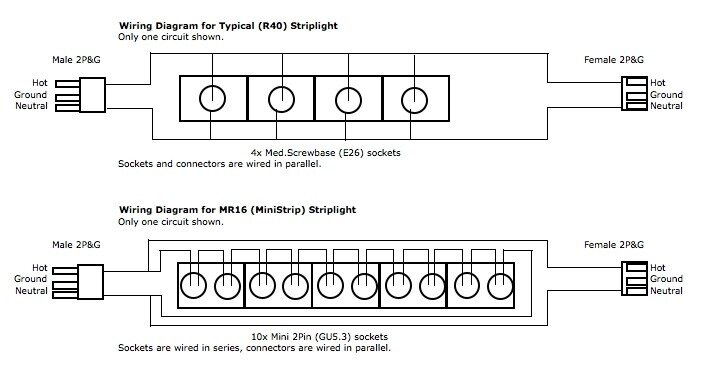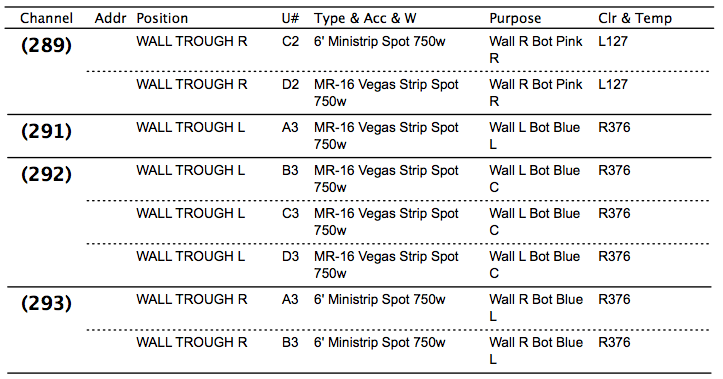Mods: Feel free to change the title of this thread if you can think of something more decriptive/accurate.
So I feel kinda weird asking this question, but can anyone explain to me in detail how "Vegas Strips" work? I'm talking about the MR-16 Mini-Strips available from L&E that come in sections - specifically, their product no. 6560-3. As I understand it, it's basically a 6' Mini-Strip that's been broken into three pieces to make it easier to fit in small places or around curves. The only time I've ever seen these in person or heard about them was at In The Heights on broadway, where they used 8 of these for footlights, then had to completely cover the 9th one in blackwrap in the pit since it had to be connected as well.
Has anyone ever used these before? While I understand the basic concept, I don't really understand how they actually work together. Are the three sections permanently wired together, or is there some sort of connector that you connect them with? Can you run the remaining sections off to a remote location, or do they have to be right next to eachother? What would happen if you tried to only use one or two? I've spent a long time searching around the interwebs, but nothing's really been very helpful - and the search results for "Vegas Strips" haven't been particularly helpful either...
Thanks!
So I feel kinda weird asking this question, but can anyone explain to me in detail how "Vegas Strips" work? I'm talking about the MR-16 Mini-Strips available from L&E that come in sections - specifically, their product no. 6560-3. As I understand it, it's basically a 6' Mini-Strip that's been broken into three pieces to make it easier to fit in small places or around curves. The only time I've ever seen these in person or heard about them was at In The Heights on broadway, where they used 8 of these for footlights, then had to completely cover the 9th one in blackwrap in the pit since it had to be connected as well.
Has anyone ever used these before? While I understand the basic concept, I don't really understand how they actually work together. Are the three sections permanently wired together, or is there some sort of connector that you connect them with? Can you run the remaining sections off to a remote location, or do they have to be right next to eachother? What would happen if you tried to only use one or two? I've spent a long time searching around the interwebs, but nothing's really been very helpful - and the search results for "Vegas Strips" haven't been particularly helpful either...
Thanks!
Last edited by a moderator:





